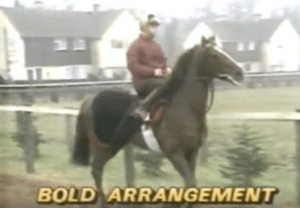Aside from Arkle & Flyingbolt, which was the highest rated steeplechaser in history?
Whether or not the Timeform Annual Rating awarded to Arkle (212), or his contemporary stablemate Flyingbolt (210), is accurate remains open to question. Either way, the pair stands head and shoulders – or 20lb, in empirical terms – above any other steeplechaser to grace a racecourse in the last five decades or so.
On the whole, the Timeform Organisation is fastidious about keeping ratings consistent from one generation to the next, precisely so that comparisons can be made without the need for so-called ‘historical recalibration’. The veracity of ratings from the mid-60s aside, it therefore seems reasonable to use Timeform to identify the next highest-rated steeplechaser in history or, at least, in the history of that venerated authority.
The horse in question was Sprinter Sacre (192p), who ran his last race, as a ten-year-old, in April, 2016 but, even at that late stage, was considered likely to improve on his rating by the Timeform scribes. Owned by Caroline Mould and trained by Nicky Henderson, Sprinter Sacre won 14 of his 18 steeplechases, including the Arkle Challenge Trophy in 2012 and the Queen Mother Champion Chase twice, in 2013 and 2016. All told, he won nine times at the highest Grade One level and may, indeed, have been better yet, but for being diagnosed with an irregular heartbeat in late 2013, which ruled him out for the whole of 2014.
 The first horse to run in the Kentucky and Epsom Derbies and, indeed, the first British-trained horse to run in ‘The Race for the Roses’, was Bold Arrangement, owned by Anthony and Raymond Richards and trained, in Newmarket, by Clive Brittain. Brittain was renowned for his adventurous, pioneering spirit and, although often accused of ’tilting at windmills’, became synonymous with high-profile success at home and abroad.
The first horse to run in the Kentucky and Epsom Derbies and, indeed, the first British-trained horse to run in ‘The Race for the Roses’, was Bold Arrangement, owned by Anthony and Raymond Richards and trained, in Newmarket, by Clive Brittain. Brittain was renowned for his adventurous, pioneering spirit and, although often accused of ’tilting at windmills’, became synonymous with high-profile success at home and abroad.